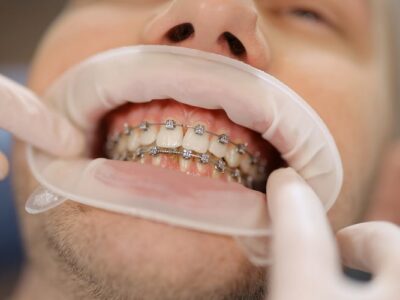Adding a standing desk to your workspace isn’t just for offices; it can be a game-changer in schools too. You might wonder, “Can a standing desk make a difference for students?” The answer is a definite yes! Let’s dive into four key reasons why standing desks should become a staple in every classroom.
Schools are about more than just classrooms — they’re about students and their learning experience. While the type of desk might seem minor, a standing desk can boost a student’s overall school experience. It’s not just about the furniture; it’s about creating an environment that helps students thrive.
Standing desks can significantly improve concentration and academic performance by minimizing the discomfort and restlessness that often come with long periods of sitting. By creating a more engaging and dynamic learning environment, standing desks encourage active participation and help students retain information more effectively.
Boost Focus with a Standing Desk
Standing desks can help students focus better and stay more engaged. This can be, for example, a small sit stand desk with smart features to adjust the height to the needs of a student.
Different models of desks meet different needs, the choice depends on many individual factors. Research shows that standing while working can increase blood flow and oxygen to the brain, improving cognitive function.
Plus, standing desks can reduce fidgeting and restlessness, helping students concentrate better on their tasks.
Sitting for long periods is linked to various health issues, like obesity and heart disease. Standing desks encourage movement, promoting better health throughout the day.
They can also improve posture and reduce back pain, making them a smart choice for student well-being.
Ever notice how sitting for too long can make you feel sluggish? Standing desks can counter that by boosting energy levels.
Standing increases heart rate and blood flow, helping students stay alert and energized, ready to tackle the day with more vigor.
Sitting for extended periods can contribute to feelings of anxiety and depression. Standing, on the other hand, can lift your mood by increasing endorphins and serotonin levels. It’s a simple way to help students feel better and manage stress throughout their day.
Tackling Sedentary Habits in Kids
One of the main reasons schools are adopting standing desks is to address the growing issue of sedentary lifestyles among children.
With more time spent on digital devices and the demands of schoolwork, kids are sitting more than ever, both in and out of school.
This trend has serious health consequences, including poor posture, back pain, and a higher risk of obesity.
Standing desks provide a simple yet effective way to encourage more movement during the school day.
By giving students the option to switch between sitting and standing, these desks help promote physical activity, which is key to a healthy lifestyle.
Research shows that even small increases in daily activity can lead to better health outcomes for students. Standing desks in classrooms can be a crucial step in fighting childhood obesity.
When students stand, they burn more calories than when they sit. Over time, this extra movement can contribute to maintaining a healthier weight.
In addition to helping with weight management, standing desks improve circulation and reduce the risk of musculoskeletal issues. Less time spent sitting means less strain on the spine and hips, which can lead to better posture and less discomfort.
These benefits highlight why standing desks should be part of a larger effort to improve physical wellness in schools.
Finding the Right Balance Between Standing and Sitting
While standing desks offer many benefits, it’s important to maintain a balance between standing and sitting. Standing for too long can lead to discomfort and fatigue, especially for younger students. That’s why educators need to encourage regular shifts between sitting and standing throughout the day.
A good strategy is to integrate standing periods into activities that naturally involve more movement, like group discussions or hands-on projects.
Additionally, using anti-fatigue mats can help ease the strain on students’ legs and feet during longer standing sessions. By striking this balance, students can enjoy the benefits of standing desks without any downsides.
In addition to balancing standing and sitting, it’s crucial to practice good posture to avoid potential health issues. Whether students are sitting or standing, poor posture can lead to discomfort and long-term problems.
To promote healthy posture while standing, students should keep their neck, head, and torso aligned in a straight line, allowing their spine to rest naturally.
Their upper arms should stay close to the body, with wrists and arms resting parallel to the desk surface. Introducing simple aids like footstools can help students shift their weight and stay comfortable, and wearing supportive shoes can make standing for longer periods more manageable.
By focusing on proper posture, students can fully benefit from standing desks while minimizing the risk of strain or fatigue.
Thoughtful Implementation of Standing Desks in the Classroom
Introducing standing desks in the classroom requires careful planning to maintain proper ergonomics. It’s important to have desks that are adjustable to fit students of various heights, ensuring everyone can work comfortably.
Additionally, these desks should offer enough space for learning materials and technology, so students have everything they need within reach.
Teachers might also need to adapt their teaching methods to fit a more dynamic classroom setup. Incorporating lessons that encourage movement and using flexible seating arrangements can maximize the benefits of standing desks, making the learning experience more engaging and effective.
The move towards standing desks in schools is a forward-thinking step that promotes student health and supports active learning environments. As schools place more emphasis on physical wellness, standing desks provide a simple yet powerful way to encourage movement and improve overall well-being.
Alongside standing desks, ergonomic chairs also play an important role in helping students maintain good posture throughout the day, ensuring a balanced and healthy classroom experience.














Comments